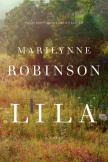Painful Blessings
With Lila, Marilynne Robinson completes her astonishing trilogy of books focused on the Midwestern minister John Ames and his community in the small town of Gilead, Iowa. Robinson earned a triple crown of critical recognition for these novels, having won the Pulitzer Prize for Gilead (2004) and National Book Award finalist nominations for Home (2008) and Lila. Recently Lila also won the National Book Critics Circle Award for fiction.
Lila takes its inspiration from the book of the prophet Ezekiel, and the novel will leave readers breathless with appreciation for what Robinson does with the message of that bold prophet. Although Ezekiel lived centuries before the Christian era, his prophetic visions provide Robinson with a fascinating lens through which to view 1930s rural American religious faith and, by implication, our own times and tribulations.
The novel’s opening would be worthy of William Faulkner or Toni Morrison. An unnamed young girl is rescued (or is she kidnapped?) by an enigmatic woman named Doll. Doll wraps her in a shawl, and, although the child is not an infant, there is an echo of Jesus’ infancy narratives with various threats to the child’s welfare. Within its first three pages the novel presents a kind of exodus journey out of that uniquely American captivity, the dysfunctional family.
Lila and Doll fall in with a motley crew traveling from town to town doing odd jobs under the leadership of a stolid man named Doane. Lila and Doll spend several years with Doane and his people before Dust Bowl winds devastate the land and the labor prospects of the itinerant group. The old woman and the young girl set off on their own.
Because Doll makes sure Lila receives formal schooling, the girl’s intelligence and native sense of curiosity blossom. Doll protects Lila even to the point of engaging in a knife fight; her subsequent arrest precipitates one of the most unusual jail breaks in American literature. It will leave readers both consoled and questioning what really happened. Doll resembles one of Faulkner’s best characters, Dilsey from The Sound and the Fury. Faulkner’s admiring appraisal of Dilsey applies equally to Doll: “They endured.”
Left alone and without Doll’s guidance, Lila gradually spirals downward, reaching her low point in a St. Louis brothel. When Ezekiel denounced Jerusalem as a prostitute he also affirmed that God could and would forgive all. Lila finds her way to reconciliation in Gilead, where she ducks into a church one rainy day, attracted by its warmth and candlelight. She meets the minister John Ames, a man in his 60s who welcomes her. In Ames’ plainspoken, deeply reflective Christian perspective Lila finds healing and hope.
Ames’ pastoral kindness toward Lila deepens slowly, and appropriately, into a mutual affection and love. Lila’s quirky but authentic spontaneity is quite delightful, as when she blurts out a marriage proposal to the stunned Ames. Ames offers Lila the opportunity for a new, saving interpretation of a past that seemed irredeemable. Ames phrases it this way: “Misfortunes have opened the way to blessings you would never have thought to hope for, that you would not have been ready to understand as blessings if they had come to you in your youth when you were uninjured, innocent.”
Robinson’s prodigious storytelling skills allow rescue, redemption and interior reflection to flow together as translucently as the river water Ames uses to baptize Lila, or the melted snow water he uses to baptize their newborn son who arrives late in the novel. This birth provides Ames his nunc dimittis moment. Like an aged Simeon holding the infant Jesus in the temple, Ames can hold his own son and feel that his life has reached a gospel fullness.
Robinson populates her novel with eccentric, memorable characters such as Ames’ closest friend and fellow minister Robert Boughton, a person of few words, all of them filled with gospel grit. The latter portion of the novel offers an inspired portrait of Ames and Boughton as models for facing advanced age. It involves both a letting go and an embrace of God’s promised land, even if a person might need a cane to walk through its heavenly gates.
This article also appeared in print, under the headline “Painful Blessings,” in the May 18, 2015, issue.








